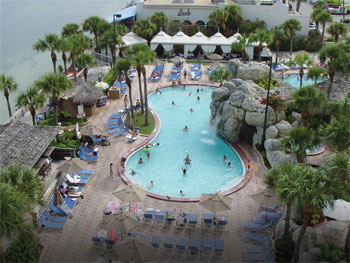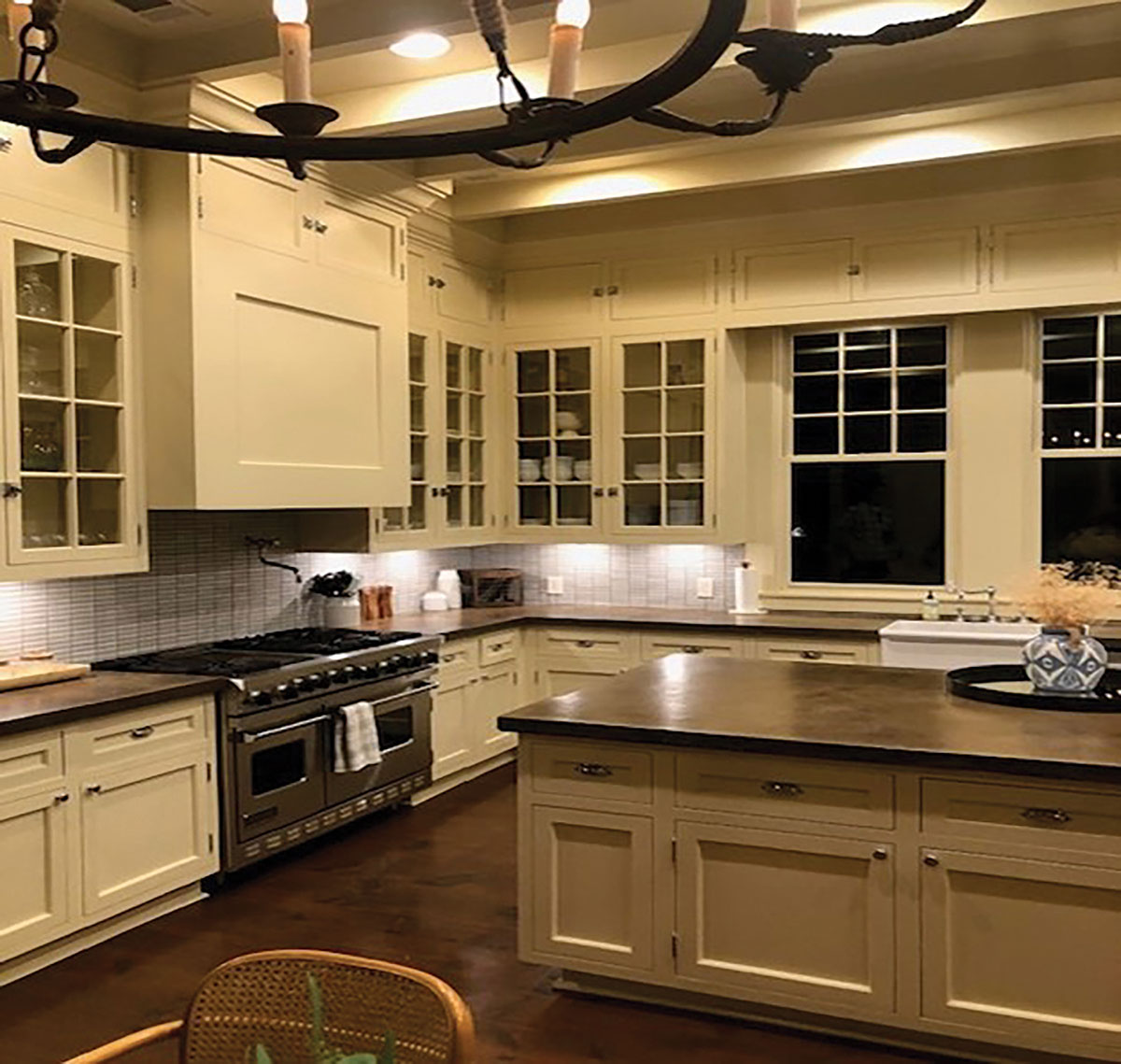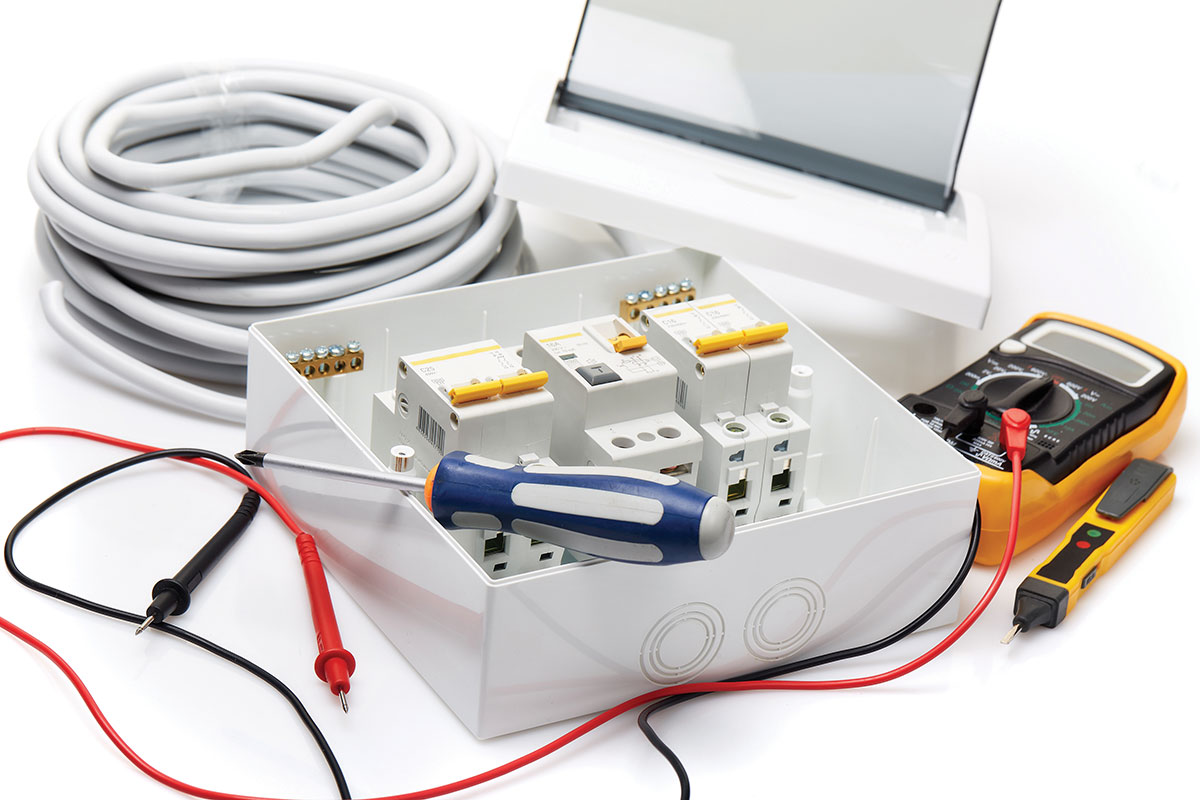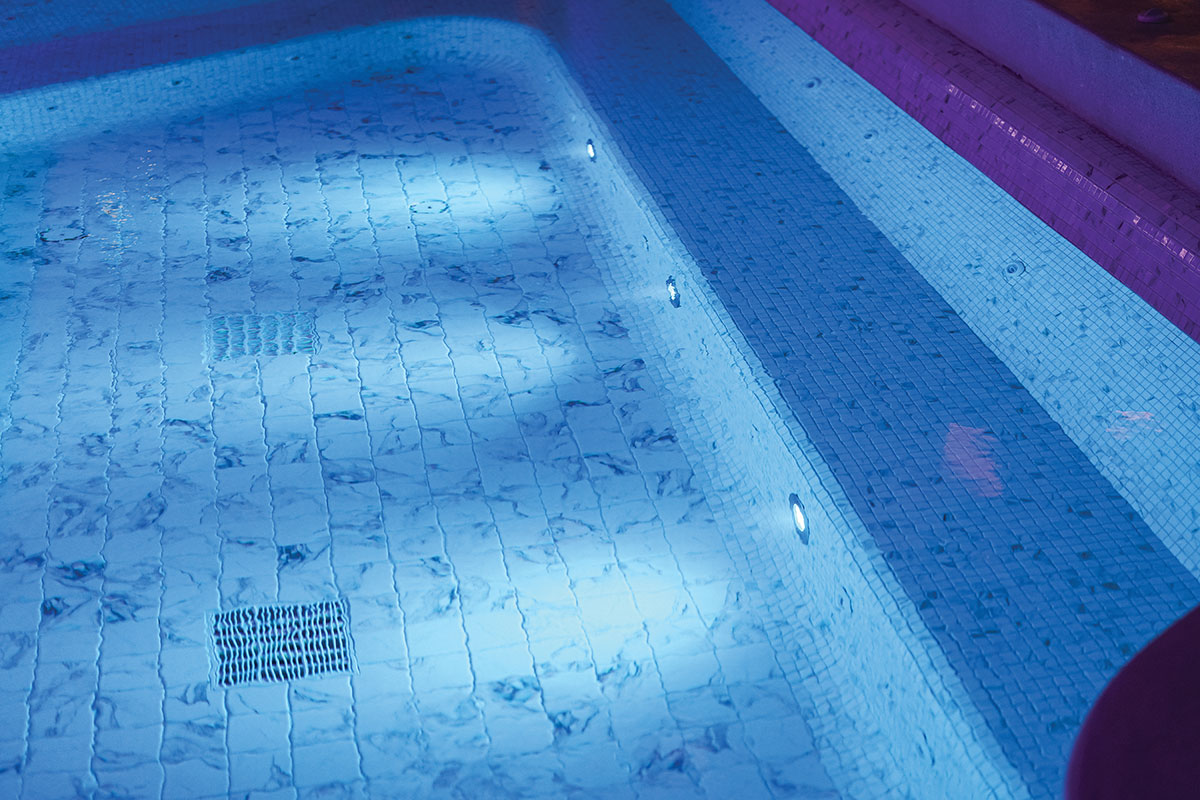Most of us have seen or read something about the figure commonly known as thefire triangle(oxygen, heat, and fuel), which is a working model to illustrate and to help one understand the ingredients necessary for most fires. There is another odd triangle that contributes to most electrocutions associated with the swimming pool environment. The first leg of thisswimming pool triangleis water. Not just water, but chemically treated water. The second leg is electricity, and the third leg of this swimming pool triangle is people. Typically, when these three components are mixed together, the results are not favorable, particularly to that third leg, people. What makes this strange concoction even more perplexing is the fact that we typically unite the mechanisms of the swimming pool triangle together on purpose!

Photo 1. The need for a safe installation is apparent around a swimming pool where water, electricity, and people are present.
With this potentially volatile triangle as our backdrop, it’s no wonder that ground-fault circuit interrupters (GFCI) are a major player in and around swimming pools. GFCIs are defined in Article 100 of theNECas “A device intended for the protection of personnel that functions to de-energize a circuit or portion thereof within an established period of time when a current to ground exceeds the values established for a Class A device.” Class A GFCIs, which are the type required in and around swimming pools, trip when the current to ground is 6 mA or higher and do not trip when the current to ground is less than 4 mA. A GFCI will function to de-energize a circuit or portion of a circuit, within an established period of time, where a current to ground exceeds a predetermined value of 6 mA, which is less than that required to operate the overcurrent protective device protecting the supply circuit. There is nothing magic about GFCIs and swimming pools. GFCIs offer no better or worse personnel protection around a pool than in other places that require GFCI protection. However, because of the conductive nature of a large body of water such as a swimming pool, personnel protection from ground-faults is extremely important and necessary. In this article, we will take a look at some of the specific GFCI requirements for permanently installed swimming pools.

GFCI History with Article 680

Figure 1. Pool pump motors require GFCI protection.
At permanently installed swimming pools at dwelling units, 680.22(A)(3) requires at least one 125-volt, 15- or 20-ampere receptacle to be installed within a 1.83 m (6 ft) to 6.0 m (20 ft) distance from the inside wall of the pool. Section 680.22(A)(4) calls for all 15- and 20-ampere, single-phase, 125-volt receptacles located within 6.0 m (20 ft) of the inside walls of any pool to be GFCI-protected. This would apply to any pool, not just at dwelling units.
Pool Pump Motors
According to 680.22(B), all 15- or 20-ampere, 125-volt or 240-volt, single-phase outlets supplying pool pump motors are required to be provided with ground-fault circuit-interrupter protection for personnel. GFCI protection for pool pump motors is required whether supplied by receptacle or direct connection. GFCI protection for pool pump motors has not always been required for a direct connection, but theNECnow requires GFCI protection for these motors whether cord-and-plug connected or hard-wired. It should be noted that 680.22(B) applies to these pool pump motor outlets regardless of their location from the inside edge of the swimming pool.
Luminaires and Ceiling Fans Installed around Pool Areas
Generally, luminaires, lighting outlets and ceiling-suspended (paddle) fans cannot be installed over the pool or over any area extending 1.5 m (5 ft) horizontally from the inside walls of a pool unless they are located 3.7 m (12 ft) or more above the maximum water level. Existing luminaires and lighting outlets that are located less than 1.5 m (5 ft) measured horizontally from the inside walls of a pool, must be installed so they are at least 1.5 m (5 ft) above the surface of the maximum water level. Such luminaires must be rigidly attached to the existing structure and GFCI protected per 680.22(C)(3).
Indoor Luminaire Installations
Section 680.22(C)(2) permits certain new luminaires or ceiling-suspended paddle fan(s) to be installed in close proximity to an indoor pool. The ceiling-suspended (paddle) fans are required to be identified for use beneath ceiling structures such as porches or patios. Indoors, the distance from the bottom of the luminaire or ceiling-suspended (paddle) fan to the maximum water level cannot be less than 2.3 m (7 ft 6 in.). These indoor luminaires are also required to be of the totally-enclosed type and GFCI protection is required to be installed in the branch circuit supplying the luminaire(s) or ceiling-suspended (paddle) fan(s).
GFCI Protection in Adjacent Areas
Where luminaires and lighting outlets are installed in the area extending between 1.5 m (5 ft) and 3.0 m (10 ft) horizontally from the inside walls of a permanently installed swimming pool, GFCI protection is required. GFCI protection is not required where the luminaires are installed, at least 1.5 m (5 ft) away and 1.5 m (5 ft) above the maximum water level. These luminaires must also be rigidly attached to the structure adjacent to or enclosing the pool.

Photo 3. Underwater luminaires require GFCI protection.
Underwater Luminaires

GFCI-Protected Conductors Installed with Non-GFCI-Protected Conductors
There are four specific alternatives to this general rule where non-GFCI-protected conductors can occupy the same raceways, boxes or other enclosures containing load side GFCI-protected conductors. These alternatives are as follows:
1. Ground-fault circuit interrupters are permitted in a panelboard that contains circuits protected by other than ground-fault circuit interrupters.
2. Supply conductors to a feed-through-type ground-fault circuit interrupter are permitted in the same enclosure.
3. Conductors on the load side of a ground-fault circuit interrupter are permitted to occupy raceways, boxes, or enclosures containing only conductors protected by ground-fault circuit interrupters.
4. Grounding conductors are permitted in the same raceway, box or enclosure.
It is very clear that conductors that supply pool equipment, such as pool pump motors that do not have GFCI protection, cannot be installed in the same conduits and junction and pull boxes with conductors having GFCI protection that supply underwater luminaires. Special precautions need to be taken here to make absolutely sure that no non-GFCI-protected conductor, whether intentional or unintentional, finds its way to an underwater luminaire in direct contact with the pool water.
Electrically Operated Pool Covers
An electrically operated pool cover is a piece of motor-driven equipment specifically designed to cover and uncover the water surface of a pool by means of a flexible sheet or rigid frame. Electric motors, controllers and wiring generally must be located at least 1.5 m (5 ft) from the inside wall of such pool. These components are permitted to be at a lesser distance where separated from the pool by a permanent barrier such as a wall or cover. The device that controls the operation of the cover motor is required to be located so that the operator has a complete view of the pool. Electric motors must be of the totally enclosed type where they are installed below grade level. The branch circuit that supplies the electric motor and controller is required to be protected by a ground-fault circuit interrupter per 680.27(B)(2).
Conclusion
As we have seen with this article, GFCI protection is a major player in and around permanently installed swimming pools. Theswimming pool trianglenecessitates these GFCI provisions where water, electricity, and people are in such close proximity to one another. This article addressed only those GFCI requirements specific to permanently installed swimming pools. There are several other GFCI requirements inNECArticle 680 for such things as storable pools, spas and hot tubs, fountains, therapeutic tubs, and hydromassage bathtubs. GFCI protection is essential to provide a safe and fun environment for our friends and families in and around swimming pools that can be a source of great enjoyment when the electricity associated with these pools is treated with the respected it warrants.














Find Us on Socials